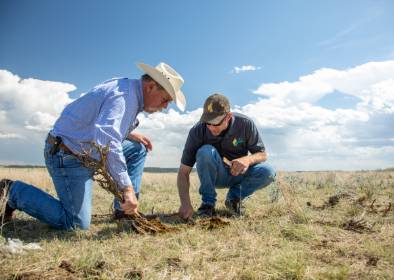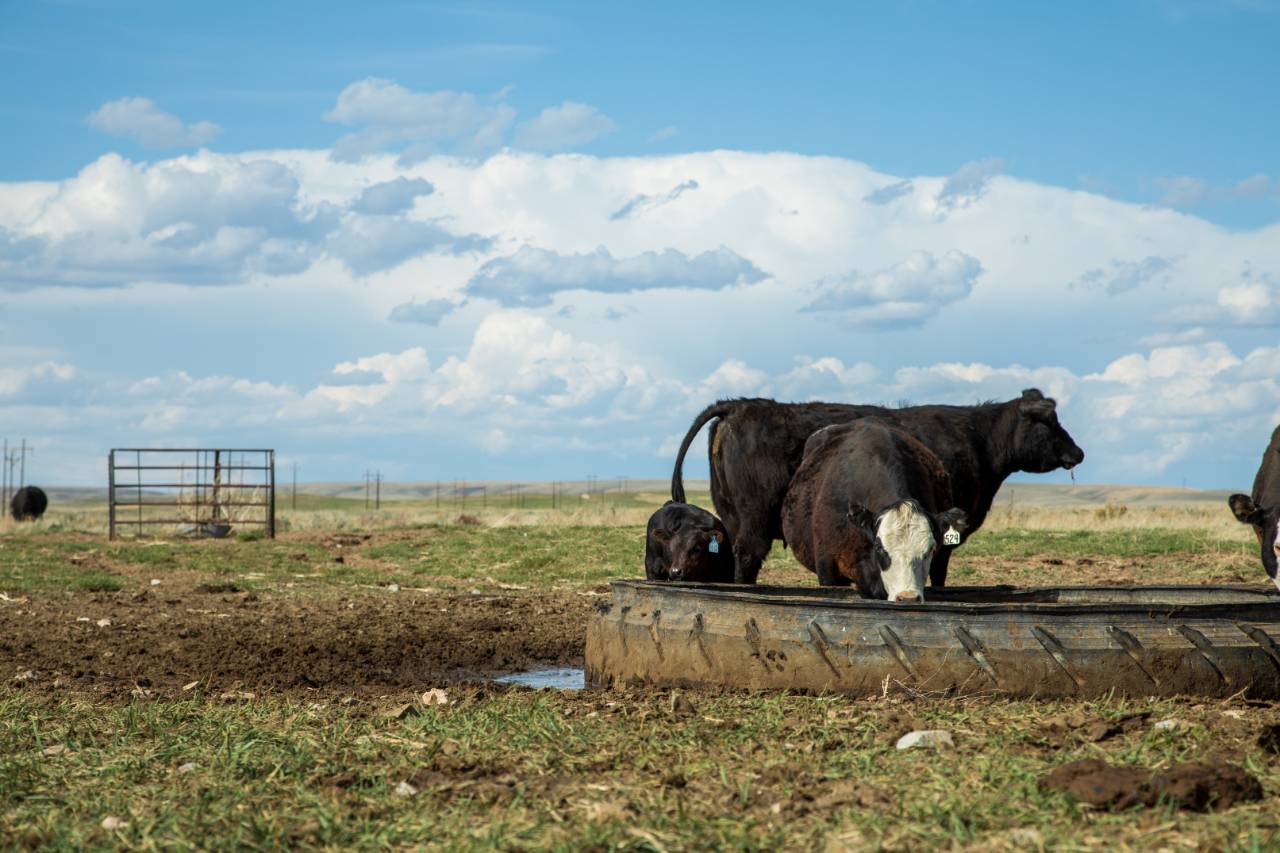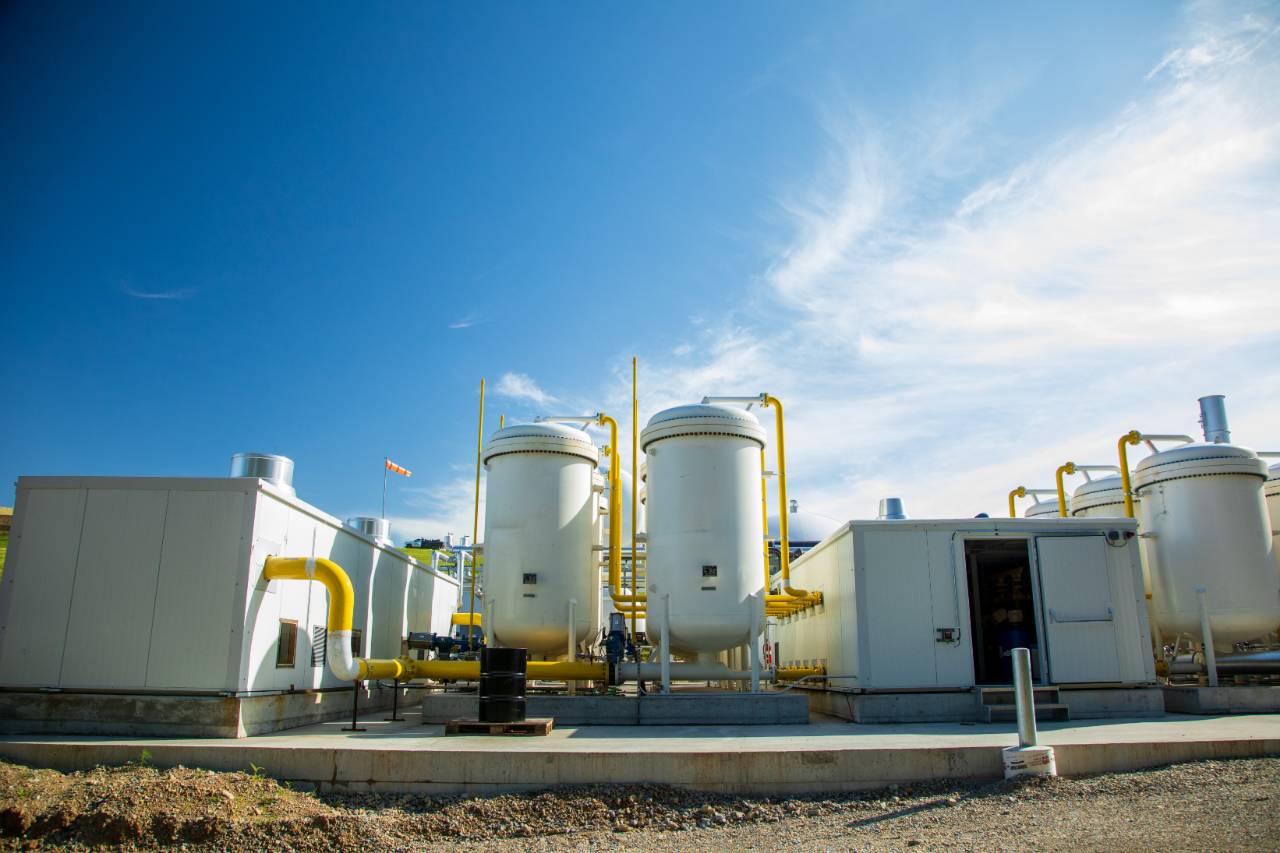Improving soil, reducing carbon emissions
Climate change may reduce the ability of some crops to absorb nutrients, and in many regions may make soil drier.
Biochar is a plant-based substance that can be added to soil, increasing the amount of moisture and nutrients available to crops. In addition, biochar helps remove carbon dioxide from the atmosphere. Thus far, production and adoption of biochar within the U.S. has been slow, but some initiatives underway are aiming to change that.
Farmers consider many factors as they grow their crops, including the moisture levels in the soil, the nutrients available, and the various microbes that reside underground.
Finding the right combination of these factors to maximize crop yield can be tricky – and will become increasingly difficult in the future as the climate continues to change.
Climate change threatens agriculture with erratic weather, including both floods and droughts, hotter temperatures, and increasing competition from insects and weeds. But the threat operates in both directions: agriculture itself helps drive climate change, acting as a net contributor of greenhouse gases to the atmosphere. There are many reasons for this: the high energy cost of producing fertilizer, the movement of carbon from poorly managed soils into the atmosphere, the methane emitted by livestock and by agricultural waste, and more. While there is no single response that addresses all these issues, one substance that has the potential to lessen the impacts of a changing climate on agriculture, and vice versa, comes, oddly enough, in the form of carbon.
Biochar is a form of charcoal made from plant matter that has been exposed to high temperatures, becoming dark and brittle. When added to soil, biochar yields several benefits.
For example, certain microbes in the soil are essential for helping plants take up water and nutrients. “Biochar can provide a house for microbes. You look at the biochar under a microscope and it’s all carbon tubes. Microbes are able to get inside the tube and it’s a sort of shelter for them,” explains Rowdy Yeatts, a biochar producer based in Wyoming. “Many of the soils in the region have less than 1% organic matter, so there is literally nowhere for the microbes to live. Biochar helps solve this problem along with addressing many other issues we have with our soil.”
“We’re able to take that material that’s destined for the landfill and start to bring that into a useable product that sequesters carbon from the atmosphere.”
Biochar also helps to retain nutrients in the ground, reducing the need for fertilizers. It forms an organic coating that releases nutrients over time. But biochar doesn’t just enhance soil health – it can also limit the amount of carbon that enters the atmosphere. Simply creating biochar in the first place means that carbon from dead plants, which would normally be released into the atmosphere and contribute to climate change as the plants decompose, is instead trapped for long periods of time, sometimes even thousands of years.
“Things like wood waste and yard waste are taken out to the landfill and after a few years they eventually break down and release their carbon back into the atmosphere. But we’re able to take that material that’s destined for the landfill and start to bring that into a useable product that sequesters carbon from the atmosphere,” explains Yeatts.
Biochar is far from an all-in-one solution for offsetting fossil fuel emissions. Studies estimate that widescale use of biochar could offset approximately 2% of carbon dioxide emission worldwide – a modest percentage, yet still impactful in combination with other responses.
There is yet another intriguing way biochar may be able to slow the release of greenhouse gases into the atmosphere. Evidence is emerging that small amounts of biochar mixed into cattle feed can reduce the amount of carbon dioxide and methane the animals produce. Methane is a greenhouse gas that is 25 times more potent than carbon dioxide, and farm animals and their manure are the single largest human-associated contribution of methane to the atmosphere. In one study, Andrea Watson at the University of Nebraska-Lincoln and her colleagues explored how this approach affects steers’ (male cattle) ability to digest food and how much it could reduce the animals’ greenhouse gas production.
They gave a small group of steers two different diets, each containing varying amounts of biochar. Adding the substance to the steers’ diet did not cause them to eat less, and steers being fed one of the diets experienced a small decrease in their ability to digest food. “But the interesting thing on the gas emissions side,” Watson says, “is that both diets basically resulted in, on average, a 10% reduction in methane emissions.”
A small handful of other studies in cattle have shown that biochar mixed into feed can reduce the amount of methane the animals produce, and this approach is approved in Europe, Australia and Canada. However, more research to ensure that biochar doesn’t negatively impact meat quality and animal health is needed before it is approved as an additive to cattle feed in the U.S. by the Food and Drug Administration.
Another outstanding question is why biochar is effective at reducing the methane production of cattle. Watson says, “There are several theories, but nothing has been proven yet. It could just be it’s a very porous material, so it might just be absorbing gases being released in [the cow’s stomach] and then carrying them through to the manure. Or it could be changing [the] microbial population within the [cow’s stomach], in which case it’s actually reducing how much methane is being produced. Either one is possible at this point – or it could be something completely different.”
According to Yeatts, much of the biochar that he produces at his facility in Wyoming, called High Plains Biochar LLC, is being sold to researchers like Watson. He produces about 100,000 pounds a year and anticipates expanding production over the coming years.
“There are more and more biochar producers popping up across the country. We’re kind of behind other places like Europe and Australia where it’s quite popular,” he says. “We also have a bit of a technology drag in terms of production of biochar. We obviously have a lot of biowaste in the U.S., but we don’t necessarily have the technology to turn that into biochar or heat on an industrial scale.”


New programs are helping people interested in biochar access the resource, however. One such program began in 2016, as foresters at the Kansas Forest Service and Nebraska Forest Service struggled to help landowners address critical land management concerns. A tree called the Eastern Redcedar is taking over much of the region. Although it is native to Kansas and Nebraska, human-driven changes to the landscape were allowing the species to take root a little too well. Eastern Redcedars are bushy – only a small percentage produce viable lumber – and are costly for landowners to manage. At the same time, many locals were beginning to ask questions about biochar and were interested in using it on their crops and gardens. Heather Nobert and her colleagues at Nebraska Forest Service saw an opportunity: turn the Eastern Redcedars into biochar.
In 2017, they launched the Great Plains Biochar Initiative (GPBI) using funding from the U.S. Forest Service Wood Innovations Program. Through the GPBI, grants up to $5,000 are awarded to residents of Nebraska and Kansas, including row and specialty crop producers, researchers, small business owners, community gardens, nonprofit organizations and private citizens. Grants are primarily for those who plan to purchase biochar, or equipment and supplies to manufacture the substance. The GPBI has since been expanded to include North Dakota.
“We offer workshops with industry experts, where participants have the opportunity to learn about biochar then make it for themselves,” says Nobert. “We also offer technical assistance for biochar producers, from hobbyists to large companies.”
Yeatts first heard about biochar in 2015 and began producing it by 2017, now serving as a vendor for the GPBI. He says, “When we were just getting started and just learning about biochar and all it can accomplish, it was just fascinating. The more I learned the more it just sounded like a solution that we need to be looking at in the future.”
He believes that biochar’s greatest untapped value is from feeding it to cattle as a supplement to reduce greenhouse gas emissions. “By getting the benefits from the cows as well as the soil, we’ll able to take advantage of the full potential of biochar, as far as it can affect our global warming and carbon sequestration,” he says.
Story by: Michelle Hampson (Sept. 2019).
Banner image: Rowdy Yeatts stirs woodchips in a hopper, in preparation for cooking them into biochar. Credit: Impact Media Lab / AAAS.




